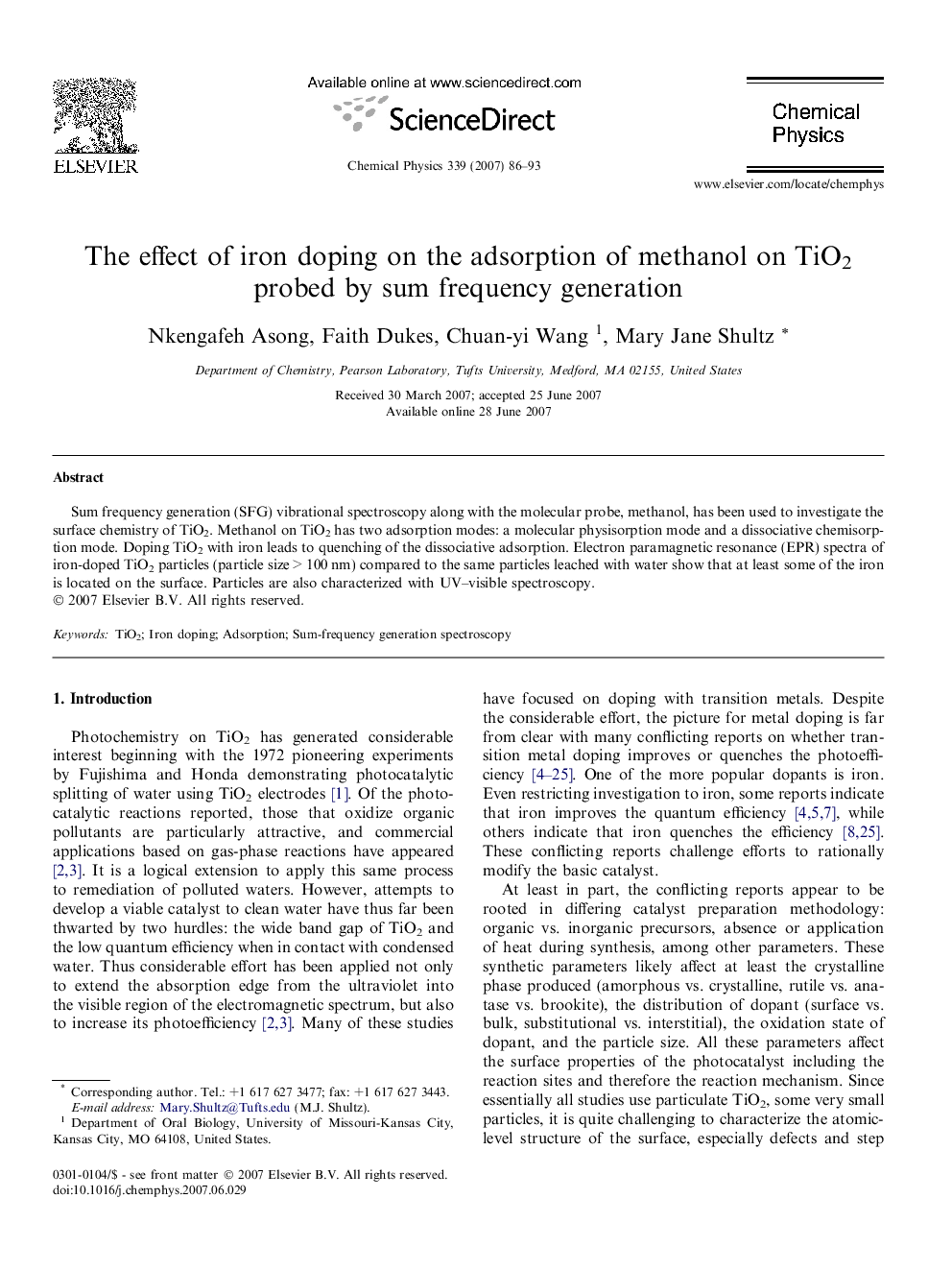| Article ID | Journal | Published Year | Pages | File Type |
|---|---|---|---|---|
| 5376321 | Chemical Physics | 2007 | 8 Pages |
Abstract
Sum frequency generation (SFG) vibrational spectroscopy along with the molecular probe, methanol, has been used to investigate the surface chemistry of TiO2. Methanol on TiO2 has two adsorption modes: a molecular physisorption mode and a dissociative chemisorption mode. Doping TiO2 with iron leads to quenching of the dissociative adsorption. Electron paramagnetic resonance (EPR) spectra of iron-doped TiO2 particles (particle size > 100 nm) compared to the same particles leached with water show that at least some of the iron is located on the surface. Particles are also characterized with UV-visible spectroscopy.
Related Topics
Physical Sciences and Engineering
Chemistry
Physical and Theoretical Chemistry
Authors
Nkengafeh Asong, Faith Dukes, Chuan-yi Wang, Mary Jane Shultz,
